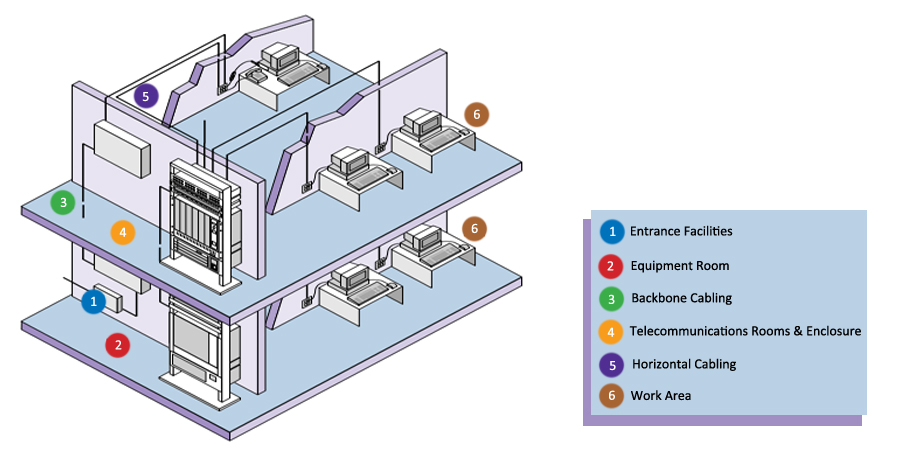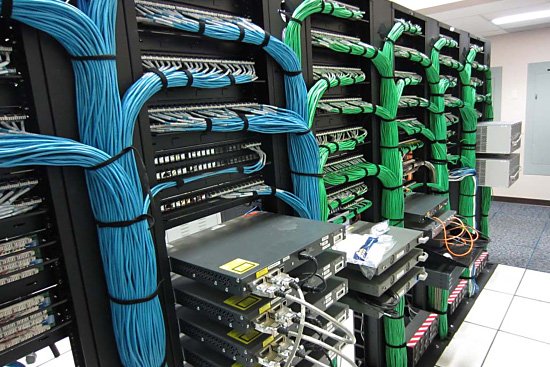Building a structured cabling system is instrumental to the high performance of different cable deployments. Typically, a structured cabling system contains the cabling and connectivity products that integrates the voice, data, video, and various management systems (e.g. security alarms, security access, energy system, etc.) of a building. The structured cabling system is based on two standards. One is the ANSI/TIA-568-C.0 of generic telecommunications cabling for customer premises, and another is the ANSI/TIA-568-C.1 of commercial building telecommunications cabling for business infrastructures. These standards define how to design, build, and manage a cabling system that is structured. Six key components are included to form a structured cabling system.
Generally speaking, there are six subsystems of a structured cabling system. Here will introduce them respectively for better understanding.

The horizontal cabling is all the cabling between telecommunications outlet in a work area and the horizontal cross-connect in the telecommunications closet, including horizontal cable, mechanical terminations, jumpers and patch cords located in the telecommunications room or telecommunications enclosure, multiuser telecommunications outlet assemblies and consolidation points. This type of wiring runs horizontally above ceilings or below floors in a building. In spite of the cable types, the maximum distance allowed between devices is 90 meters. Extra 6 meters is allowed for patch cables at the telecommunication closet and in the work area, but the combined length of these patch cables cannot exceed 10 meters.
Backbone cabling is also known as vertical cabling. It offers the connectivity between telecommunication rooms, equipment rooms, access provider spaces and entrance facilities. The cable runs on the same floor, from floor to floor, and even between buildings. Cable distance depends on the cable type and the connected facilities, but twisted pair cable is limited to 90 meters.
Work area refers to space where cable components are used between communication outlets and end-user telecommunications equipment. The cable components often include station equipment (telephones, computers, etc.), patch cables and communication outlets.
Telecommunications closet is an enclosed area like a room or a cabinet to house telecommunications equipment, distribution frames, cable terminations and cross connects. Each building should have at least one wiring closet and the size of closet depends on the size of service area.
Equipment room is the centralized place to house equipment inside building telecommunications systems (servers, switches, etc.) and mechanical terminations of the telecommunications wiring system. Unlike the telecommunications closet, equipment room houses more complex components.
Entrance facility encompasses the cables, network demarcation point, connecting hardware, protection devices and other equipment that connect to the access provider or private network cabling. Connections are between outside plant and inside building cabling.
Why do you need the structured cabling system? Obviously, there are many benefits for using the system. A structured cabling can standardize your cabling systems with consistency so that the future cabling updates and troubleshooting will be easier to handle. In this way, you are able to avoid reworking the cabling when upgrading to another vendor or model, which prolongs the lifespan of your equipment. All the equipment moves, adds and changes can be simplified with the help of structured cabling. It is a great support for future applications.

From this article, we can know that a structured cabling system consists of six important components. They are horizontal cabling, backbone cabling, work area, telecommunications closet, equipment room and entrance facility. Once you split the whole system into small categories, the cabling target will be easier to get. As long as you keep good management of these subsystems, your cabling system is a success to be called as structured wiring.
